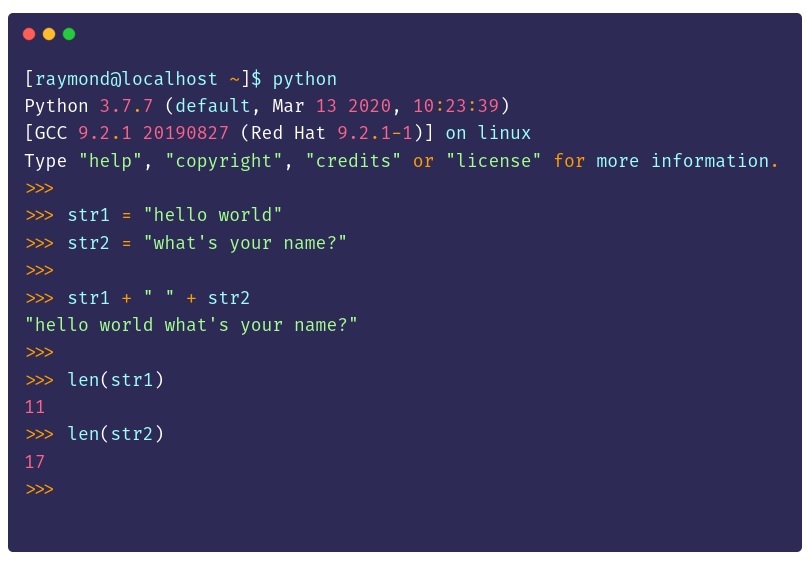


Individual characters in a string can be accessed by specifying the string name followed by a number in square brackets (). For example, str1 'Hello, world' str2 'I. In Python, strings are ordered sequences of character data, and thus can be indexed in this way. If two strings are equal, the operator returns True. We use the operator to compare two strings. For example, 'hello' is a string containing a sequence of characters h, e, l, l, and o. There are many operations that can be performed with strings which makes it one of the most used data types in Python. If two strings are equal, the value returned would be True. Most Python programs start out with using '' for strings. In computer programming, a string is a sequence of characters. In this article, well see various operators that can help us check if strings are equal or not. Before the bashing begins, let me explain.

This is exactly why + behave unexpectedly on lists. Thus, + changes the object’s value for mutable types like lists, whereas for immutable objects like tuples, strings and integers + returns a new object. I found that the following mindset helps a lot when dealing with Python strings: All Python manifest strings should use the u'' syntax. It mutates the object that it operates on. Python Dictionaries Access Items Change Items Add Items Remove Items Loop Dictionaries Copy Dictionaries Nested Dictionaries Dictionary Methods Dictionary Exercise Python If.Else Python While Loops Python For Loops Python Functions Python Lambda Python Arrays Python Classes/Objects Python Inheritance Python Iterators Python Polymorphism Python Scope Python Modules Python Dates Python Math Python JSON Python RegEx Python PIP Python Try. All strings meant for humans should use u''.


 0 kommentar(er)
0 kommentar(er)
